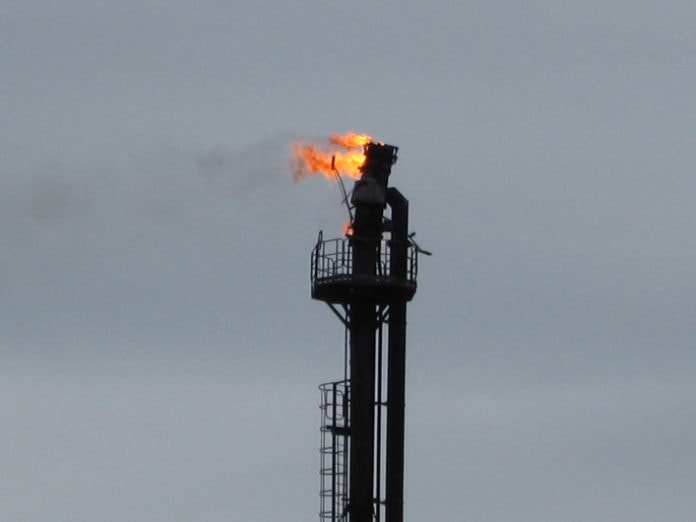H2S is one of the most dangerous gases that you will encounter while working in the oil patch.
It is extremely toxic, flammable, and can damage metals.
Most field locations have strict procedures in place when it comes to H2S detection and treatment.
In addition, most leases require everyone to have H2S safety certification.
What is H2S?
Hydrogen sulfide is a colorless toxic gas that smells like rotten eggs at low concentrations (0.1 ppm).
This is the same smell you might feel in some hot springs.
At high concentrations, you might not be able to sense it because it affects your ability to smell so you can’t rely on smell to detect it.
H2S is slightly denser than air which allows it to accumulate in lower areas.
Hydrogen sulfide in the oilfield is often created by sulfur-reducing bacteria.
However, it can also be formed by chemical reactions underground.
The oil that contains H2S is called sour crude.
It is more challenging to refine and is usually sold at a discount in comparison to sweet oil which doesn’t have H2S.
Related: What is the Difference Between Sour and Sweet Crude Oil?
Why H2S is Bad?
H2S is highly toxic and can kill a person even in small quantities (>500 ppm) which makes it extremely dangerous.
It acts by paralyzing the respiratory system.
However, with new safety protocols in place, most field locations are safe and some have a zero limits policy for H2S in the air.
When H2S dissolves in water, a weak acid is formed which can corrode metals.
Another way H2S can damage metals is by reacting with the metal and allowing hydrogen to diffuse into the metal and making it weaker and easier to break when stress is applied. This is called hydrogen embrittlement.
H2S gas is also very flammable.
If there is an ignition source, accumulated H2S might cause an explosion due to its rapid combustion.
Related: What is Flaring in Oil and Gas?
How H2S is Detected?
One of the ways to find out if the well has potential for H2S is to look at the offset wells in the same field.
If the field is sour, you will likely see H2S on more than one well.
H2S sensors are usually installed near the wellhead and at the testers to detect if sour gas is coming to the surface.
Most sour locations also require workers to wear H2S monitors.
During completion operations, if sour fluid is coming to the surface it is usually treated with H2S scavengers to remove dissolved H2S gas.
Equipment that comes into contact with hydrogen sulfide is often covered with inhibitors to protect it from H2S.
H2S Certification
To get your H2S certificate you will need to attend a one-day course.
H2S training usually covers topics such as:
- H2S Properties
- Health Hazards
- H2S Detection
- H2S Rescue
- H2S Protective equipment
The certificate is usually valid for 3 years, after which you have to retake the course.
Read next: Working In the Oilfield
https://www.draeger.com/Library/Content/h2s-ebook-enus.pdf
